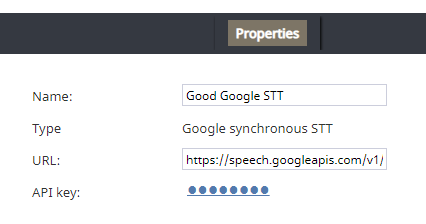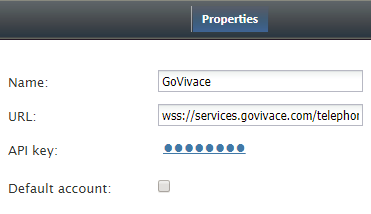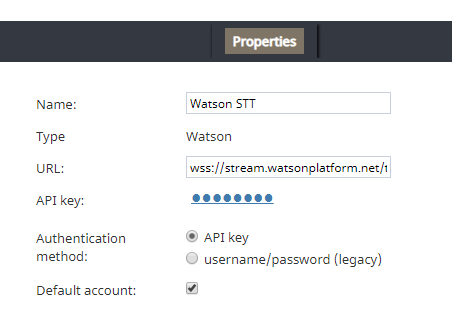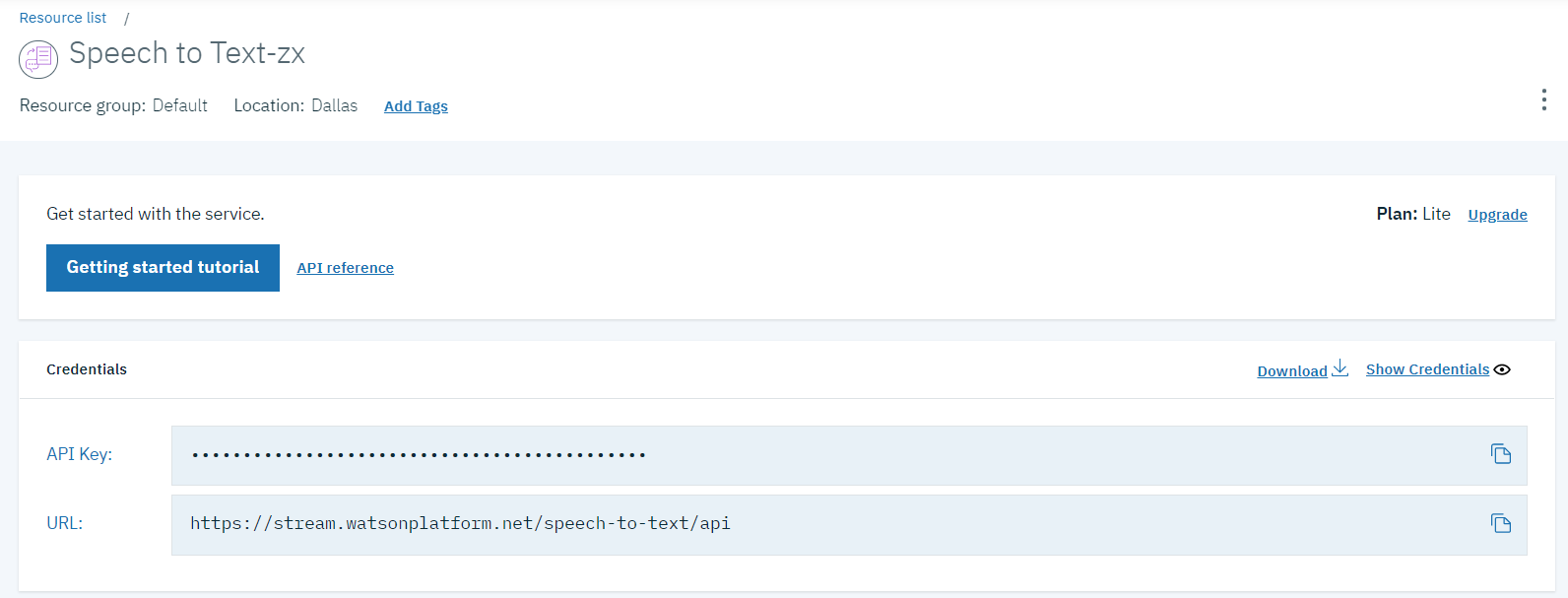| Line 77: | Line 77: | ||
=== API key === | === API key === | ||
The API key (string) for the service instance in your IBM Speech to Text: Customer Care cluster, which is used for making secure, authenticated requests. | The API key (string) for the service instance in your IBM Speech to Text: Customer Care cluster, which is used for making secure, authenticated requests. | ||
| + | |||
| + | You can find your API key on IBM Cloud by going to either: | ||
| + | * ''Speech to Text resource > Manage > Credentials'' | ||
| + | * ''Speech to Text resource > Service Credentials > View Credentials'' | ||
| + | |||
| + | |||
| + | [[File:STT-API-Key.PNG|800px|center|thumb|Speech to Text service credentials]] | ||
| + | |||
=== username/password (legacy) === | === username/password (legacy) === | ||
The ''username'' and ''password'' are the username (string) and password (string) that were originally used to authenticate IBM's Speech to Text service APIs. | The ''username'' and ''password'' are the username (string) and password (string) that were originally used to authenticate IBM's Speech to Text service APIs. | ||
| − | The username and password were previously provided in the service credentials for the service instance. We refer to username/password authentication as "legacy" because IBM | + | The username and password were previously provided in the service credentials for the service instance. We refer to username/password authentication as "legacy" because IBM does not support this method of authentication, as of |
October 30, 2019. IBM now supports only IAM authentication (API key). You can learn more about IAM authentication at [https://cloud.ibm.com/docs IBM Cloud Docs]. | October 30, 2019. IBM now supports only IAM authentication (API key). You can learn more about IAM authentication at [https://cloud.ibm.com/docs IBM Cloud Docs]. | ||
Revision as of 18:08, 4 October 2019
<translate>= Speech To Text Integration (STT) = Speech To Text (STT) integration allows your contact center to use speech-to-text functionality to transcribe voice calls and save the transcriptions to interaction records. Full-text transcripts are searchable and include sentiment attributes (if Natural Language Understanding is enabled).
Bright Pattern integrates with STT providers such as IBM Watson, GoVivace, and Google.
Google Properties
Google's Cloud Speech API converts audio to text. In the Properties dialog, enter the credentials of your Google synchronous STT instance as follows. This allows Bright Pattern to access your STT resource and use it in interactions.
Name
The unique name of this integration account (any)
Type
By default, “Google synchronous STT” because you selected this type when adding the account.
URL
By default, https://speech.googleapis.com/v1/
API key
The service key ID that is used to authenticate Google's Cloud Speech API. This is generated when you get credentials for your service account.
GoVivace Properties
In the Properties dialog, enter the credentials of your GoVivace STT instance as follows. This allows Bright Pattern to access your STT resource and use it in interactions.
Name
The unique name of this integration account (any). Because you can have multiple integration accounts of the same type, it is helpful to have a descriptive, memorable name.
URL
By default, wss://services.govivace.com/telephony
STT integration uses the secure WebSocket protocol (i.e., "wss"), so only the wss:// prefix is allowed.
API Key
The GoVivace API key
Default account
Select the Default account checkbox if this integration account is to be the default STT integration account.
Watson Properties
In the Properties dialog, enter the credentials of your IBM Watson STT instance as follows. This allows Bright Pattern to access your STT resource and use it in interactions.
Name
The unique name of this integration account (any).
Type
By default, “Watson” because you selected this type when adding the account.
URL
If using the API key authentication method:
wss://stream.watsonplatform.net/text-to-speech/api
If using the legacy username/password authentication method:
wss://stream.watsonplatform.net
Note that STT integration uses the secure WebSocket protocol (i.e., "wss"), so only the wss:// prefix is allowed.
Authentication method
Select either API key or username/password (legacy). Upon selection, the appropriate fields will appear for entering your credentials.
API key
The API key (string) for the service instance in your IBM Speech to Text: Customer Care cluster, which is used for making secure, authenticated requests.
You can find your API key on IBM Cloud by going to either:
- Speech to Text resource > Manage > Credentials
- Speech to Text resource > Service Credentials > View Credentials
username/password (legacy)
The username and password are the username (string) and password (string) that were originally used to authenticate IBM's Speech to Text service APIs.
The username and password were previously provided in the service credentials for the service instance. We refer to username/password authentication as "legacy" because IBM does not support this method of authentication, as of October 30, 2019. IBM now supports only IAM authentication (API key). You can learn more about IAM authentication at IBM Cloud Docs.
Default account
Select the Default account checkbox if this integration account is to be the default STT integration account.
</translate>





